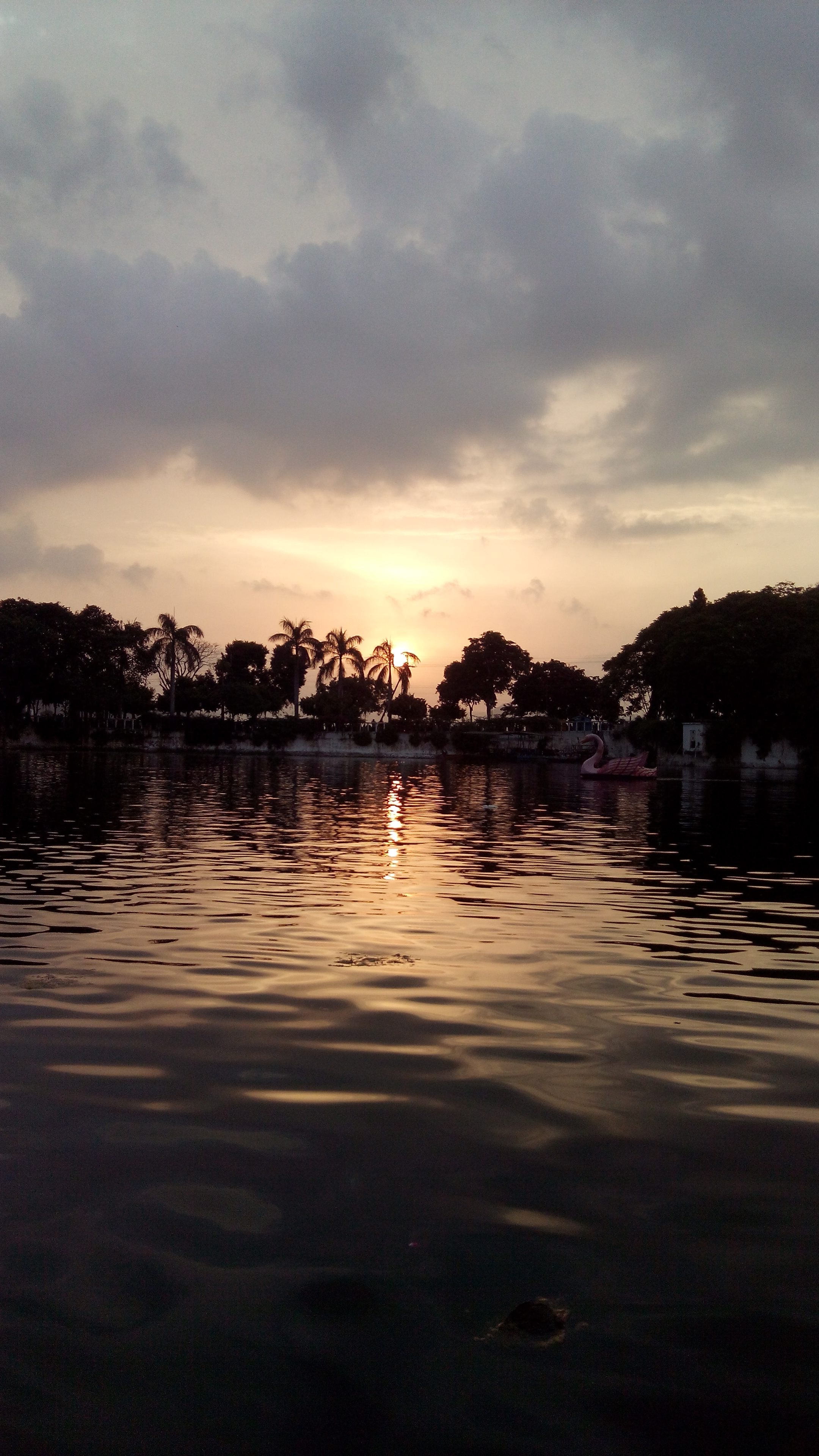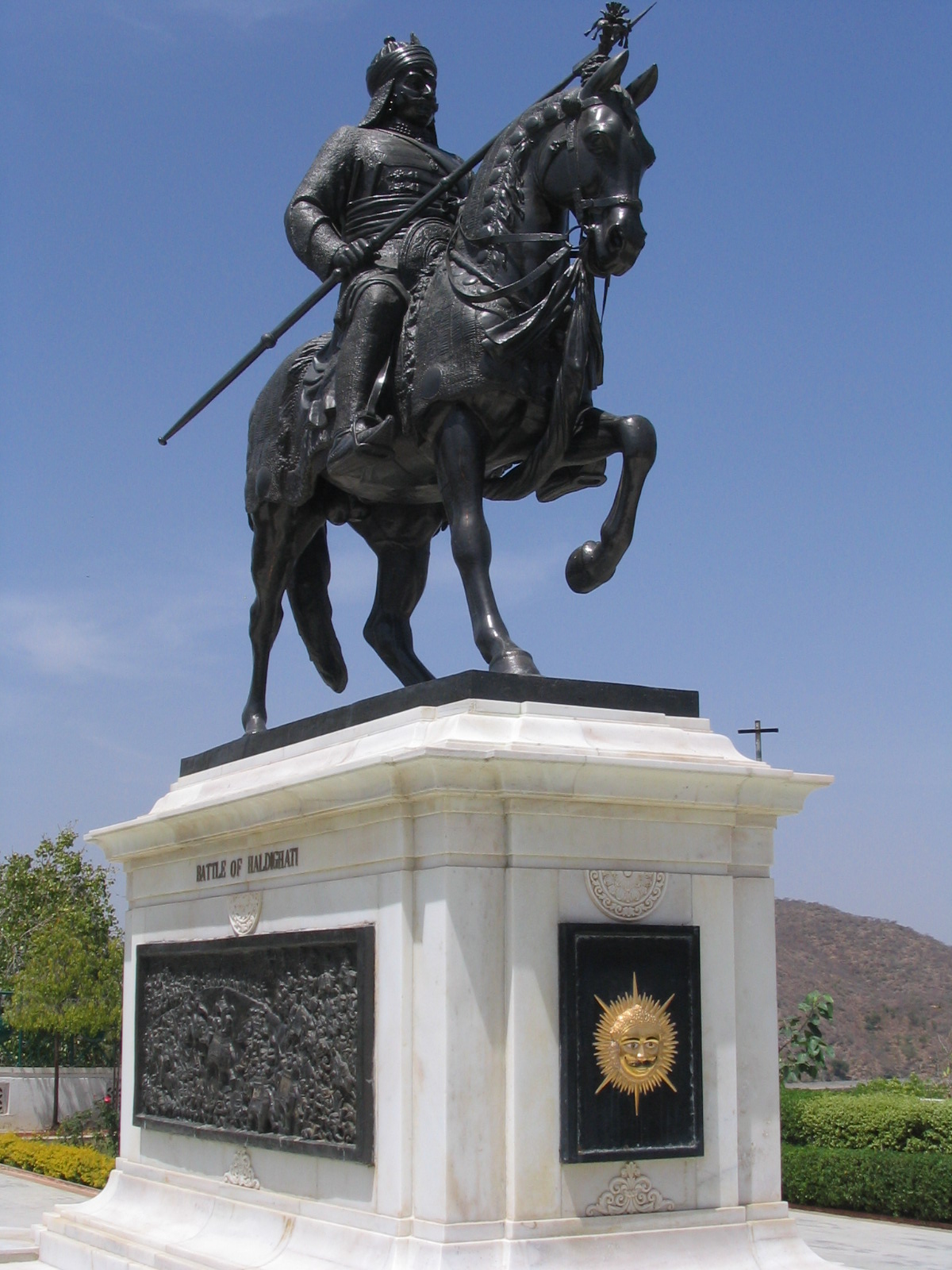|
Dudh Talai Lake
Doodh Talai Lake or Dudh Talai lake, is a small pond located adjacent to the Lake Pichola, near Shiva Niwas Palace (residence of Maharana Fateh Singh), in the heart of Udaipur, Rajasthan. Access The Doodh Talai Lake is located very much near the center of the Udaipur City. It is around 24 km away from Udaipur Airport, and just 3 km & 4 km away from Udaipur City railway station and Udaipur City Bus Depot, respectively. Visitors can also take local Tongas, auto-rickshaws and taxis to reach Doodh Talai. Attractions Doodh Talai lake shares a common link road with another picturesque attraction Lake Pichola. Doodh Talai is surrounded by small hillocks which hosts Deen Dayal Upadhyay Park, and Manikya Lal Verma Garden (or Rock Garden or Musical Fountain Garden). Doodh Talai Lake provides few options for fast food centers, camel and horse rides and boat ride. Manikya Lal Verma Garden The Manikya Lal Verma Garden (also known as Doodh Talai garden), has views o ... [...More Info...] [...Related Items...] OR: [Wikipedia] [Google] [Baidu] |
Udaipur
Udaipur () (ISO 15919: ''Udayapura''), historically named as Udayapura, is a city and municipal corporation in Udaipur district of the state of Rajasthan, India. It is the administrative headquarter of Udaipur district. It is the historic capital of the kingdom of Mewar in the former Rajputana Agency. It was founded in 1559 by Udai Singh II of the Sisodia clan of Rajput, when he shifted his capital from the city of Chittorgarh to Udaipur after Chittorgarh was besieged by Akbar. It remained as the capital city till 1818 when it became a British princely state, and thereafter the Mewar province became a part of Rajasthan when India gained independence in 1947. The city is located in the southernmost part of Rajasthan, near the Gujarat border. It is surrounded by the Aravali Range, which separates it from the Thar Desert. It is placed almost in the middle of two major Indian metro cities, around 660 km from Delhi and 800 km from Mumbai. Besides, connectivity with Gujar ... [...More Info...] [...Related Items...] OR: [Wikipedia] [Google] [Baidu] |
Rajasthan
Rajasthan (; lit. 'Land of Kings') is a state in northern India. It covers or 10.4 per cent of India's total geographical area. It is the largest Indian state by area and the seventh largest by population. It is on India's northwestern side, where it comprises most of the wide and inhospitable Thar Desert (also known as the Great Indian Desert) and shares a border with the Pakistani provinces of Punjab to the northwest and Sindh to the west, along the Sutlej- Indus River valley. It is bordered by five other Indian states: Punjab to the north; Haryana and Uttar Pradesh to the northeast; Madhya Pradesh to the southeast; and Gujarat to the southwest. Its geographical location is 23.3 to 30.12 North latitude and 69.30 to 78.17 East longitude, with the Tropic of Cancer passing through its southernmost tip. Its major features include the ruins of the Indus Valley civilisation at Kalibangan and Balathal, the Dilwara Temples, a Jain pilgrimage site at Rajasthan's only hill stat ... [...More Info...] [...Related Items...] OR: [Wikipedia] [Google] [Baidu] |
Reservoir
A reservoir (; from French ''réservoir'' ) is an enlarged lake behind a dam. Such a dam may be either artificial, built to store fresh water or it may be a natural formation. Reservoirs can be created in a number of ways, including controlling a watercourse that drains an existing body of water, interrupting a watercourse to form an embayment within it, through excavation, or building any number of retaining walls or levees. In other contexts, "reservoirs" may refer to storage spaces for various fluids; they may hold liquids or gasses, including hydrocarbons. ''Tank reservoirs'' store these in ground-level, elevated, or buried tanks. Tank reservoirs for water are also called cisterns. Most underground reservoirs are used to store liquids, principally either water or petroleum. Types Dammed valleys Dammed reservoirs are artificial lakes created and controlled by a dam A dam is a barrier that stops or restricts the flow of surface water or underground streams ... [...More Info...] [...Related Items...] OR: [Wikipedia] [Google] [Baidu] |
Polymictic
Polymictic lakes are holomictic lakes that are too shallow to develop thermal stratification; thus, their waters can mix from top to bottom throughout the ice-free period. Polymictic lakes can be divided into cold polymictic lakes (i.e., those that are ice-covered in winter), and warm polymictic lakes (i.e., polymictic lakes in regions where ice-cover does not develop in winter). While such lakes are well-mixed on average, during low-wind periods, weak and ephemeral stratification can often develop. See also * Amictic lake * Holomictic lake * Meromictic lake * Monomictic lake * Dimictic lake * Thermocline A thermocline (also known as the thermal layer or the metalimnion in lakes) is a thin but distinct layer in a large body of fluid (e.g. water, as in an ocean or lake; or air, e.g. an atmosphere) in which temperature changes more drastically with ... * References External links "Circulation: annual patterns of dimictic lakes" at Encyclopædia Britannica Online Lakes by type ... [...More Info...] [...Related Items...] OR: [Wikipedia] [Google] [Baidu] |
Lake Pichola
Lake Pichola, situated in Udaipur city in the Indian state of Rajasthan, is an artificial fresh water lake, created in the year 1362, named after the nearby Picholi village. It is one of the several contiguous lakes, and developed over the last few centuries in and around the famous Udaipur city. The lakes around Udaipur were primarily created by building dams to meet the drinking water and irrigation needs of the city and its neighbourhood. Two islands, Jag Niwas and Jag Mandir are located within Pichola Lake, and have been developed with several palaces to provide views of the lake. There are four islands on the lake: * Jag Niwas, where the Lake Palace is built. * Jag Mandir, with the palace of the same name. * Mohan Mandir, from where the king would watch the annual Gangaur festival celebration. * Arsi Vilas, small island which was an ammunition depot, but also a small palace. This one was built by one of the Maharanas of Udaipur to enjoy the sunset on the lake. It is also a ... [...More Info...] [...Related Items...] OR: [Wikipedia] [Google] [Baidu] |
Udaipur Airport
Udaipur () ( ISO 15919: ''Udayapura''), historically named as Udayapura, is a city and municipal corporation in Udaipur district of the state of Rajasthan, India. It is the administrative headquarter of Udaipur district. It is the historic capital of the kingdom of Mewar in the former Rajputana Agency. It was founded in 1559 by Udai Singh II of the Sisodia clan of Rajput, when he shifted his capital from the city of Chittorgarh to Udaipur after Chittorgarh was besieged by Akbar. It remained as the capital city till 1818 when it became a British princely state, and thereafter the Mewar province became a part of Rajasthan when India gained independence in 1947. The city is located in the southernmost part of Rajasthan, near the Gujarat border. It is surrounded by the Aravali Range, which separates it from the Thar Desert. It is placed almost in the middle of two major Indian metro cities, around 660 km from Delhi and 800 km from Mumbai. Besides, connectivity with Gu ... [...More Info...] [...Related Items...] OR: [Wikipedia] [Google] [Baidu] |
Udaipur City Bus Depot
Udaipur City Bus Depot is a Rajasthan Roadways Bus Depot in Udaipur, Rajasthan, India. It is the central bus stand for the Rajasthan State Road Transport Corporation, and have lines running for majority of other destinations in Rajasthan and farther north and west towards Madhya Pradesh and Gujarat. Major cities connected by direct bus are Delhi, Mumbai, Ahmedabad, Jaipur, Agra, Mathura, Ajmer, Jodhpur, Surat, Kota etc. There is Rajasthan Roadways Deluxe, Super deluxe and AC buses as well as private travels also available from the major cities. See also * Udaipur * Udaipur City railway station * Udaipur Airport Udaipur () ( ISO 15919: ''Udayapura''), historically named as Udayapura, is a city and municipal corporation in Udaipur district of the state of Rajasthan, India. It is the administrative headquarter of Udaipur district. It is the historic capi ... References Bus stations in Rajasthan Buildings and structures in Udaipur Transport in Udaipur {{bus-st ... [...More Info...] [...Related Items...] OR: [Wikipedia] [Google] [Baidu] |
Karni Mata, Udaipur
Shri Manshapurna Karni Mata Temple is a Hindu temple located on the Machla Magra Hills, near the Doodh Talai Lake in Udaipur, Rajasthan. It enshrines the stone idol of Karni Mata. There are views from the temple of the city and its lakes. The walkway is for pedestrians only, as no vehicles can enter in the hill boundary. Access The Karni Mata Temple is located near the center of the Udaipur City. It is around 24 km away from Udaipur Airport, and just 4 km from Udaipur City railway station and Udaipur City Bus Depot. Visitors can also take local Tongas, auto-rickshaws and taxis to reach Doodh Talai. Karni Mata Temple can be reached via ropeway. See also * Udaipur * Tourist Attractions in Udaipur * Doodh Talai Lake * City Palace, Udaipur City Palace, Udaipur is a palace complex situated in the city of Udaipur in the Indian state of Rajasthan. It was built over a period of nearly 400 years, with contributions from several rulers of the Mewar dynasty. Its construc ... [...More Info...] [...Related Items...] OR: [Wikipedia] [Google] [Baidu] |
Tourist Attractions In Udaipur
Udaipur city, also known as the 'City of Lakes' and 'Venice of East', is a very popular tourist destination in Rajasthan, India. The capital of the former princely state of Mewar, and considered as one amongst the most romantic cities of India, Udaipur is a land around the azure water lakes, hemmed in by the lush hills of the Aravalis. The city is a blend of sights, sounds and experiences. With its kaleidoscope of fairy-tale palaces, lakes, temples, gardens and narrow lanes, the city carries the flavor of heroic past, epitomizing valor and chivalry. Voted the Best City in the World in 2009 by ''Travel + Leisure'' magazine, Udaipur is now amongst the favourite wedding destinations for Indian as well as foreign nationals. Some of the key tourist destinations are: Ahar Cenotaphs The Ahar Cenotaphs are a group of royal cenotaphs of the Maharanas of Mewar, located about 2 km east of Udaipur. It has about nineteen cenotaphs of various Maharanas cremated, including one of Maha ... [...More Info...] [...Related Items...] OR: [Wikipedia] [Google] [Baidu] |






